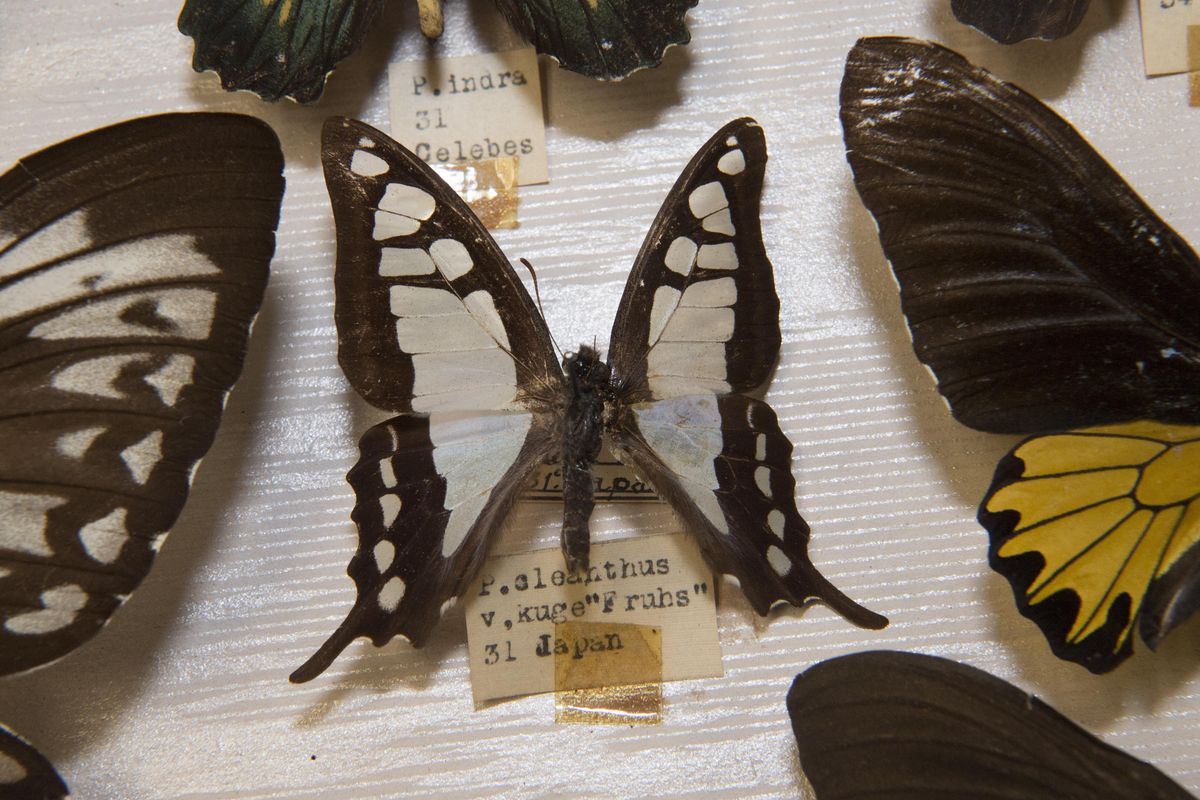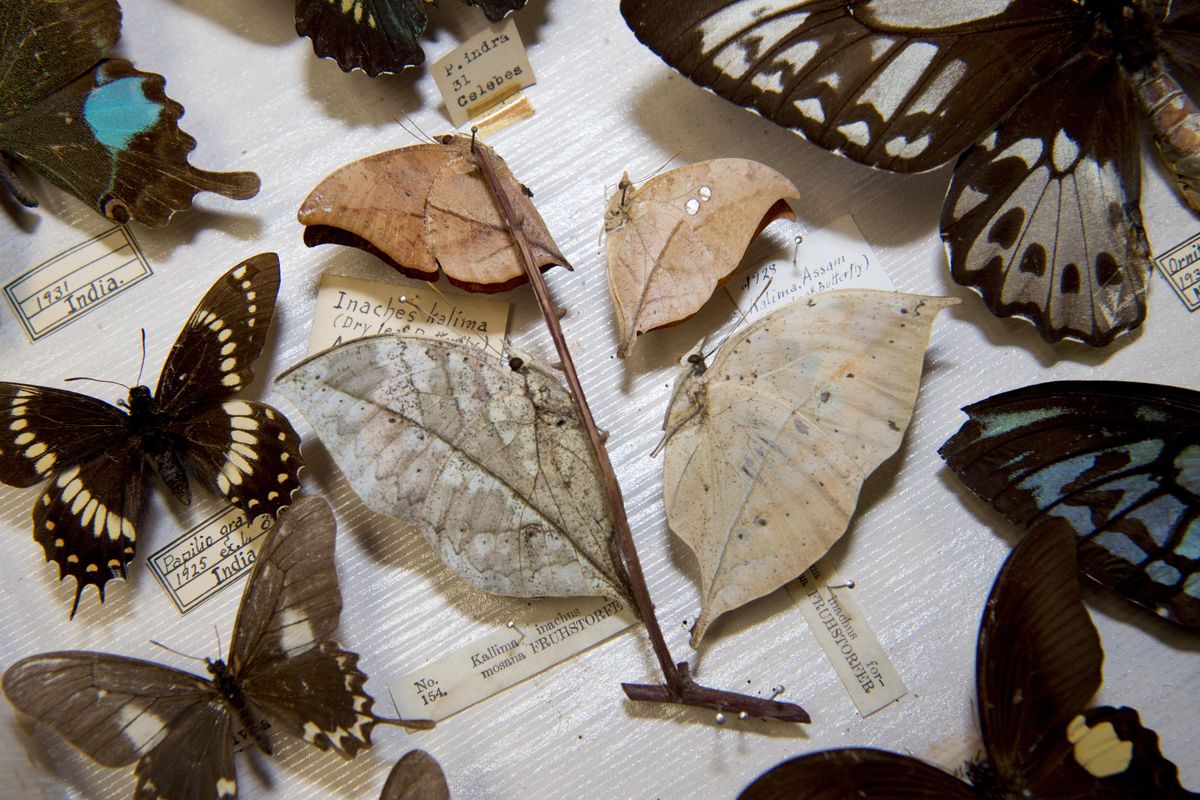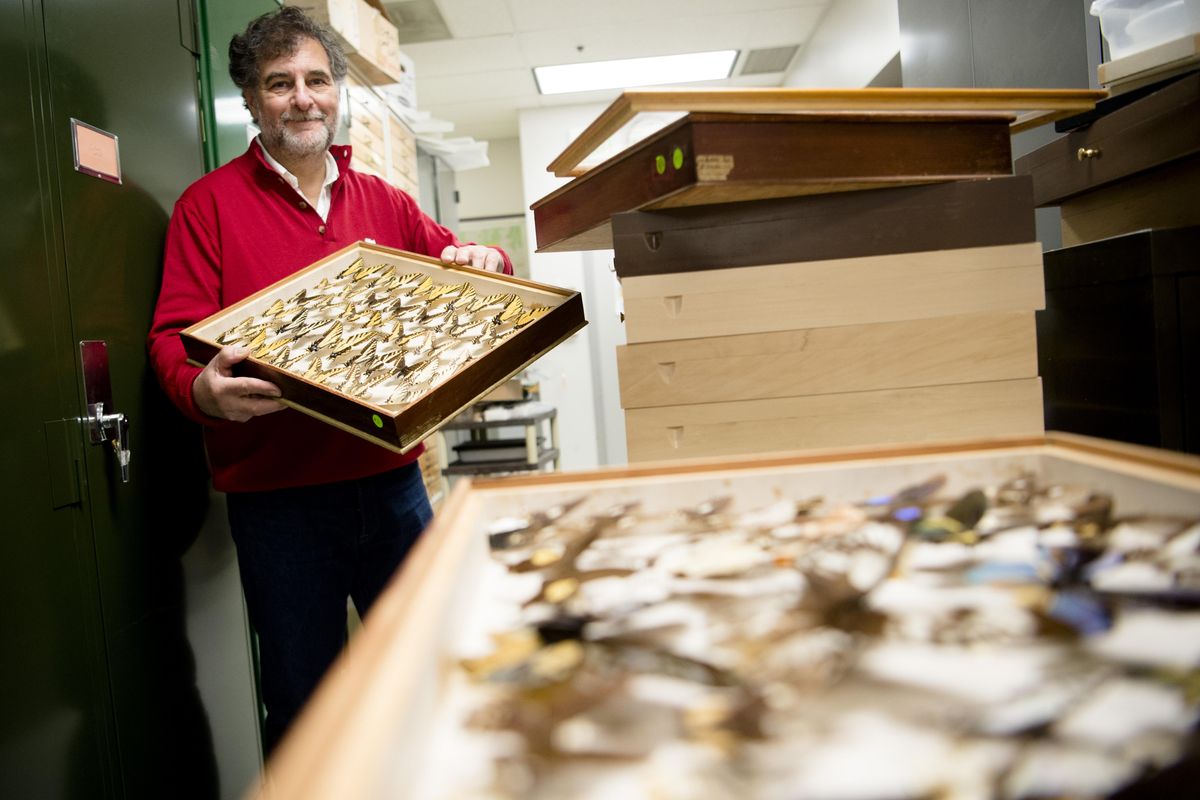This column reflects the opinion of the writer. Learn about the differences between a news story and an opinion column.
Doug Clark: Impressive butterfly collection wings its way home to WSU
A collection of donated butterflies are seen at the lab of Richard Zack, a professor of entomology at Washington State University, on Friday, Oct 28, 2016, at WSU’s campus in Pullman, Wash. (Tyler Tjomsland / The Spokesman-Review)Buy a print of this photo
PULLMAN – Before getting around to the butterflies, a few words about the Food Science and Human Nutrition building on the Washington State University campus.
It’s home to 3.5 million bugs.
Really. Before anyone calls for the Orkin Man, however, please note the aforementioned insects are all deceased like Elvis and mounted neatly on trays that make up what entomology professor Dr. Richard Zack calls “The Collection.”*
(*Formally known as the “James Entomological Collection,” so named for the late M.T. James, WSU’s former medical entomologist and collection curator.)
I learned about this weird juxtaposition during a trip to WSU on a rainy Thursday.
Blame my sick sense of humor, but I found it highly amusing that WSU’s entomology department shares the same real estate that churns out all that wonderful Cougar Gold cheese and yummy shakes and cones that are sold at Ferdinand’s, the school’s landmark “Ice Cream Shoppe.”
Zack, as scientists are wont to do, supplied a fact-based narration.
When the Food Science, etc., building was built, he said, the entomology department was the right size to occupy a modest part of it.
Never, Zack assured me, has this arrangement provoked any interdepartmental contamination, such as …
“Hey, Ralph, is it just me or does this chocolate ripple taste mothy?”
Which brings us back to butterflies – a bounteous bevy of 5,000 butterflies. And some moths.
It all started with an email from Rosalia, Washington, resident Diane Nebel.
She wanted me to know that the last chunk of one of the state’s larger private butterfly collections was being given to WSU.
Would I like to tell the story of how she and husband, Jim (who died of cancer last summer), came to be caretakers of such a prestigious assembly of Lepidoptera?
Of course I would.
I’ve long been fascinated by bugs, grubs and creepy crawlies. I even appreciate the nonelected variety we call insects.
Plus, I love being able to shine a little publicity on a part of the university that has absolutely nothing to do with blocking, tackling or running a pass pattern.
Zack was a fine host, too.
After scarfing a chocolate malt at Ferdinand’s, I wandered over to Room 157, where The Collection is housed. The affable Zack showed me a number of trays containing everything from common flies to tiger moths to elephant beetles.
Some of the beasties, he explained, date all the way back to the school’s embryonic stage in 1892.
Unlike private insect collections, which are often displayed in horror movies on the walls of mansions, the WSU collection has been assembled and stored in file cabinets as a tool for scientific research and reference.
Jim Nebel’s role in all this dates back to 1944, Diane said. That’s when her husband became friends with Andrew Anderson, the man who amassed the butterfly collection.
Anderson lived in Pateros, Washington. He was also the grandfather of one of Jim’s closest pals.
At the impressionable age of 4, Jim found himself transfixed by the many butterflies the elder Anderson had painstakingly caught, prepared and mounted in cases for display.
Jim Nebel loved spending summer vacations talking and collecting butterflies with Grandpa Anderson, Diane said.
“Upon each visit, Jim’s interest in the scaly-winged insects only intensified.”
Anderson, recalled Diane, was “an organized person and adamant about precise information as to nomenclature, dates and place each insect was collected.”
Upon turning 86, Anderson knew where his treasure belonged. He gave the entire 61-case collection to his 24-year-old apprentice.
Anderson died in 1969. He was 91.
In 1984, Jim and Diane decided to preserve Anderson’s collection by giving the bulk of it to WSU. After Jim’s death in June, Diane knew it was time to call Zack and let the remaining 1,000 butterflies go.
Diane’s eyes filled as she watched the last of her husband’s “winged collection” head to Pullman.
“But I’m OK with it,” she said. The butterflies will live on by providing an “ongoing educational experience to students and those who take time to visit the Nebel-Anderson collection.”
And after that there’s always ice cream.
Doug Clark is a columnist for The Spokesman-Review. He can be reached at (509) 459-5432 or by email at dougc@spokesman.com.









